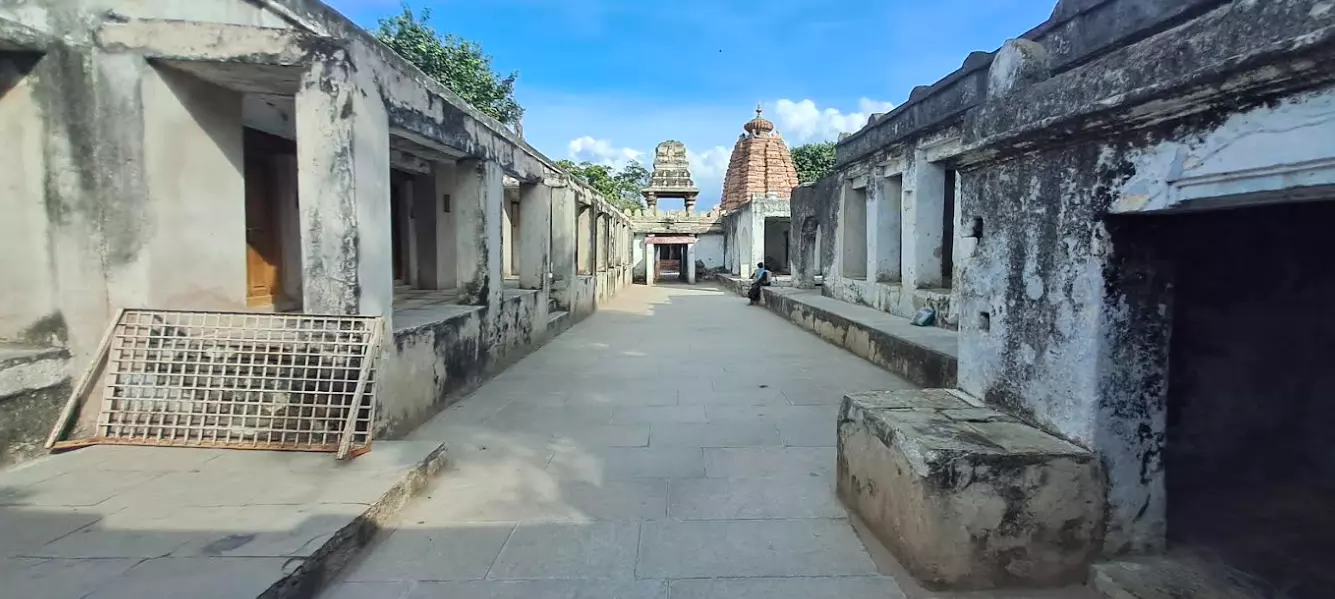Alampur Temple Complex Bearing the Brunt of 700 Years of Utter Neglect

Hyderabad: A spiritual tourist touring Telangana may look forward to visiting Yadadri, Bhadrachalam or Vemulawada. This is ostensibly because he might be unaware of the nearly 1,400-year-old temple complex — the oldest in the state — in Alampur in Jogulamba Gadwal district.
Spread over 25 acres on the left bank of the Tungabhadra river, the Alampur temple complex has ten temples — one dedicated to Goddess Shakti, which is one of the 18 Shakti Peethams in the country, and nine temples of Lord Shiva, collectively called Nava Brahmeswara or Nava Brahma temples.
While the temples were built by Vatapi (Badami) Chalukyas in the seventh century CE, the history of Jogulamba temple finds roots in mythology. It is believed that when Lord Shiva’s consort Sati immolated herself because of the disrespect shown to her and her husband by her father, an enraged Shiva performed the tandava (dance) holding the corpse of Sati and Lord Vishnu used his Sudhardhana Chakra to cut her body pieces to restore Shiva to normalcy.
The places where the parts of Sati’s body fell came to be known as Shakti Peethas. It is believed that the upper teeth of Sati fell at the place where Jogulamba temple stands.
The Jogulamba temple is the one of four Shakti Peetas in the two Telugu states, the other three being Goddess Bhramarambika temple in Srisailam, Goddess Puruhutika temple in Pithapuram and Goddess Manikyamba temple in Draksharamam.
The temple is mentioned in religious works like the ‘Skanda Purana’, literary works like ‘Panditaradhya Charitam’ of Palkuriki Somanatha and in Rasatantra works like Acharya Nagarjuna’s ‘Rasa Ratnakara’ in the eighth century and ‘Ananda Kanda’ in the 13th century.
In the ‘Skanda Purana’, Alampur was referred to as Hemalapuram. Hemala means touch stone, a dark stone used for testing alloys of gold by observing the colour of they make on the stone. In early inscriptions, it was called Halampuram or Hatampura.
In spite of such a hoary past, both in terms of mythology and historical antiquity, the Jogulamba temple and Nava Brahma temples have been under constant attack and neglect for the last 600 years.
The land that lies to the north of the Tungabhadra was under Bahmani sultans after the defeat of the Kakatiya rulers in 1323 CE. After being under the direct rule of the Delhi sultans for some time, the territory went to the Bahmanis, who destroyed the Jogulamba temple in the mid-14th century.
However, before they could destroy Nava Brahma temples, Vijayanagara ruler Harihara Raya, who ruled the area south of Tungabhadra, crossed over to Alampur to protect the ancient temples.
The Jogulamba temple was reconstructed at a new location, south of the original site, in 2005. The proper worship at this Shakti temple has been in place ever since. However, no worship is performed at Nava Brahma temples, which remain neglected for over 700 years.
They are under the protection of the Archaeological Survey of India (ASI) since 1951.
In 2018, ASI ticked off the Telangana endowments department for white-washing the walls of Bala Brahma temple, among others, and threatened to take legal action for it.
“The sculptures in the Nava Brahma temples are damaged, inscriptions are fading and the temples are in a dilapidated state. The surroundings are unclean and unkempt, evidencing vandalism. Despite their historical significance and marvelous architecture, the temples lack proper upkeep and there is no scope for regular worship,” said Ravi Goud, former chairman of the Jogulamba Temple Trust.
Though the temple has a great history, it is not well connected to key urban centres like Hyderabad or Bengaluru. It is close to the Hyderabad-Bengaluru National Highway, but the road connectivity from the national highway is pathetic. There is no proper railway connectivity despite there being a railway station at Alampur.
“There are no proper accommodation facilities for pilgrims to stay at Alampur. The only closest urban centre is Kurnool. There is no proper supply of drinking water at Alampur and power supply is erratic. Waste management system is almost non-existent. Medical facilities are limited and security measures are found wanting as is the case with parking lots. There are no tourist information centres,” explained Ravi Goud.
In order to develop the Alampur temple complex, he said the government should allot `100 crore and allow daily worship to be performed at ancient Nava Brahma temples.
Stating that the temple complex gets at least `five crore income annually from the temple lands spread across the region, he said the government could use these funds to develop the temple and provide other amenities.
He said the government could also sell temple lands in Kurnool to buy lands around the Alampur temple. He urged the Telangana government to construct a four-lane road from Alampur chowrasta to Jogulamba temple for the convenience of the pilgrims.

